This is your ultimate guide on freeze dried zucchini! I’ll teach you how to turn your fresh zucchini into freeze dried zucchini so you can use it in your favorite recipes all year long. We’ll cover the supplies needed and how to rehydrate and use your freeze dried zucchini later on. Plus, I’ll walk you through the entire process step by step.

Table of Contents[Hide][Show]
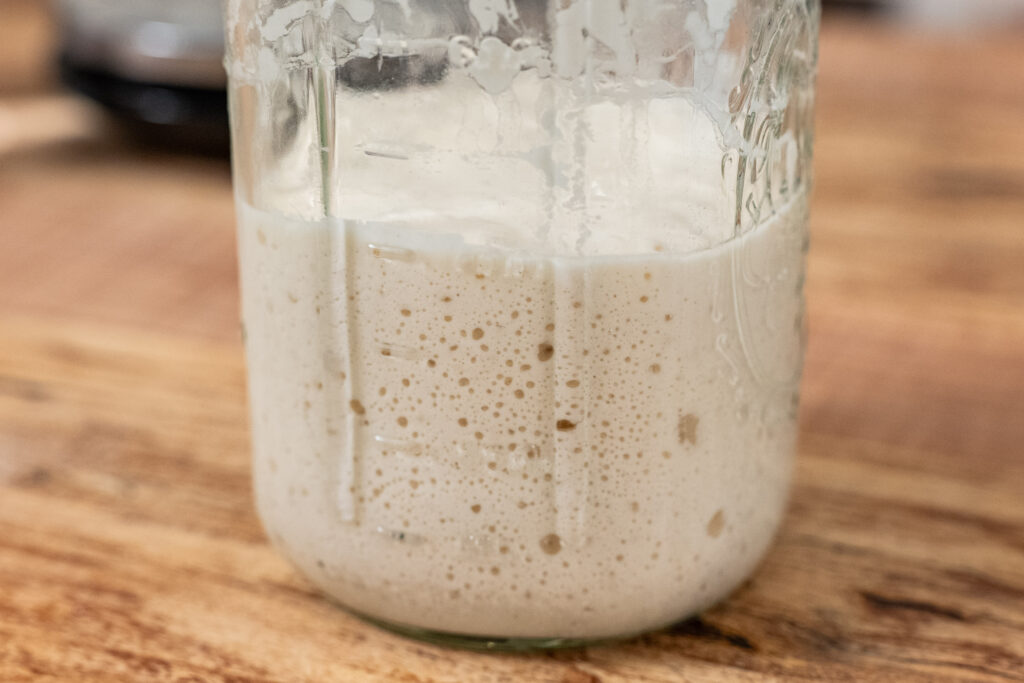
🍞 Struggling With Sourdough?
If your starter won’t take off, your loaves are dense and hard, or sourdough just flat-out overwhelms you…
👉 I’ll show you how to fix all of it.
Join my FREE live workshop and learn how to make a bubbly, active starter—the right way, from Day One.
🗓️ Jan 12 @ 1pm PT
Natural Remedies Made Simple
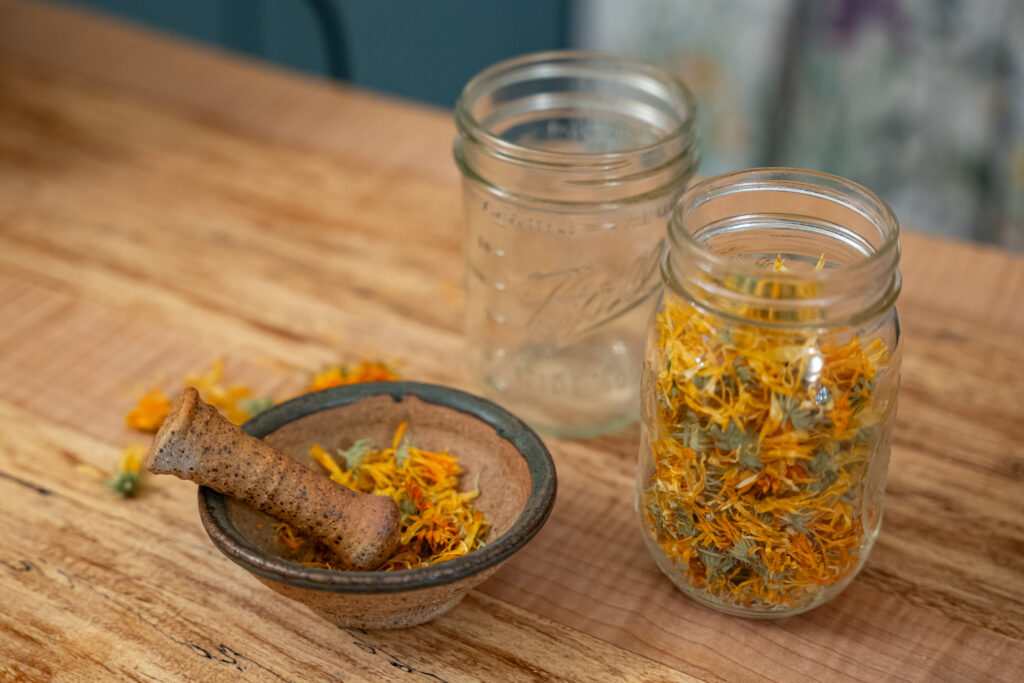
Start your home apothecary with confidence—even if you’re brand new. Learn how to choose the right herbs for your body using the simple principles of herbal energetics.
Discover how warming, cooling, drying, and moistening herbs affect your body—so you can stop guessing and start making remedies that actually work.
Why I Love Freeze Dried Zucchini
Freeze dried zucchini is my favorite preservation method. I have 144+ zucchini recipes and freeze dried zucchini works amazing in many of them. You can learn how to preserve zucchini in other ways, but freeze dried zucchini is my favorite quick and easy method.
It’s super versatile in the kitchen, and my family loves it in my double chocolate zucchini muffins, so if I can make them year-round, I’ll have one happy family. I can also add freeze dried zucchini to soups, stir-fries, or other baked goods. I love being able to sneak extra vegetables into meals without anyone knowing.
Also, when you add freeze dried zucchini to soups, stews or sauces without reconstituting it first, it acts a bit like a thickener. You can also powder your freeze dried zucchini and make zucchini flour. This works to supplement a percentage of flour in recipes for added nutrition.
Since zucchini grows so well in my climate (well, let’s be honest, zucchini grows well in most climates), I rely on more ways to preserve zucchini than just freeze drying. A few of my favorites are to use zucchini instead of cucumbers in my homemade mustard pickles recipe or to make zucchini pineapple or bread & butter zucchini pickles.
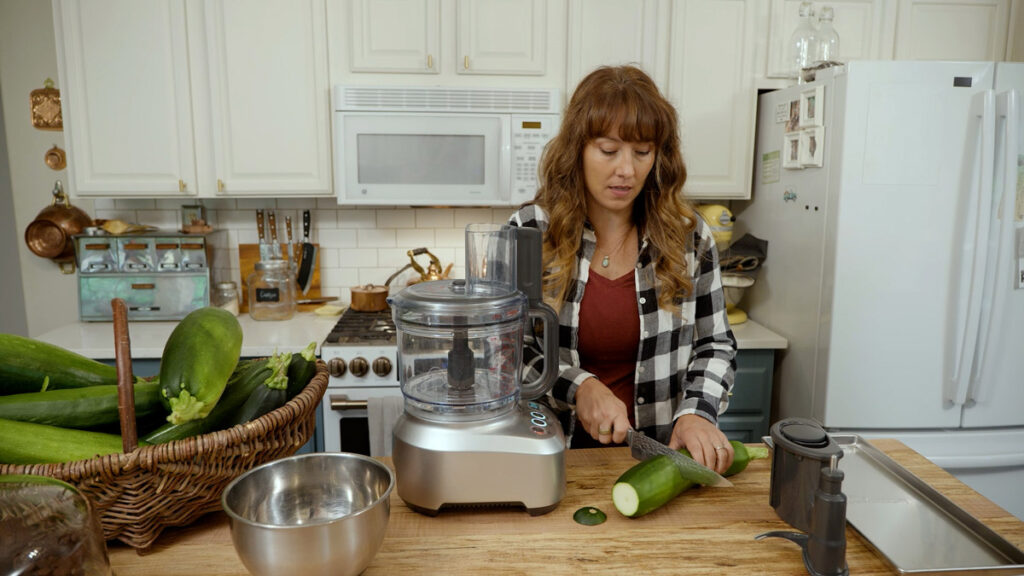
Subscribe to Melissa K. Norris!
Get updates on the latest posts and more from Melissa K. Norris straight to your inbox.
We use your personal data for interest-based advertising, as outlined in our Privacy Notice.
Different Ways to Cut Zucchini for Freeze Drying
This is the beauty of the freeze dryer, there are so many options when it comes to preparing the zucchini. You can slice it, dice it, shred it or zoodle it.
- Sliced – You can slice in discs or lengthwise for long zucchini “lasagna noodles.” The slices can be thick or thin (don’t go less than 1/2 inch thick, or they fall apart too easily). When sliced thin and freeze dried, they make great zucchini chips! Dip them in a little homemade buttermilk ranch dressing for a delicious crunchy snack. You can also slice them thicker and overlap them a bit when freeze drying, just remember the thickness will determine how long they take to freeze dry. Pro Tip: Only use the slicing method with smaller zucchini that don’t have large seed development (more on this below).
- Diced – Dicing zucchini for freeze drying is a great option for using in soups or stews. The chunks of zucchini will reconstitute in the broth and have incredible flavor. When preparing, remove seeds and feed to the chickens, don’t freeze dry them.
- Zoodles – You gotta love a zoodler! Freeze drying zoodles means you can have fresh zucchini noodles all year long. I love to reconstitute my zoodles with broth instead of water for a boost in the nutrition and flavor.
- Shredded – And finally, shredded, which is what I’m demonstrating in the video above. Shredded zucchini is so versatile for baking, thickening soups and stews, or even powdering and turning into zucchini flour later on. Because this option has so many uses, this is our preferred method for freeze drying zucchini.
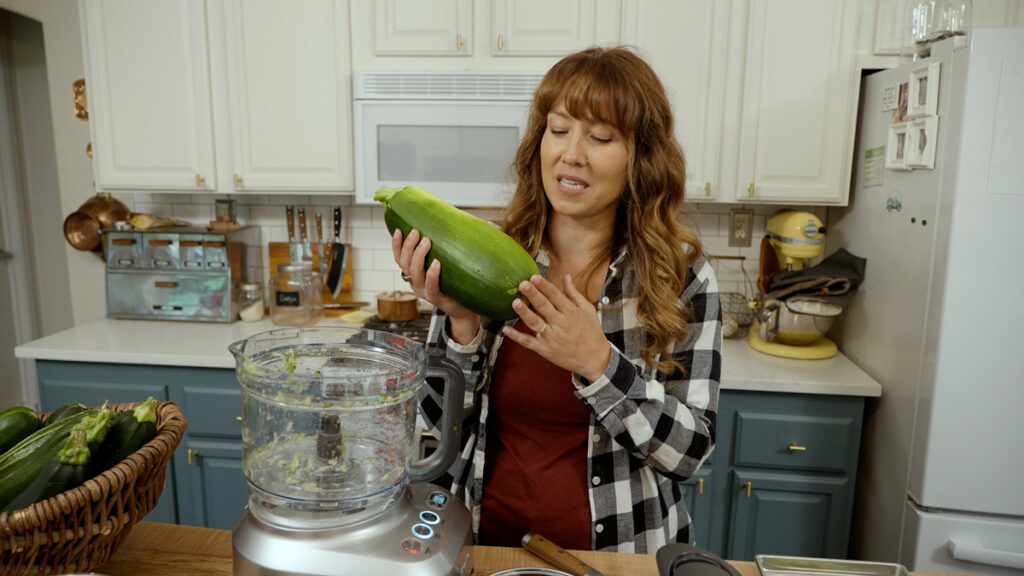
Tips for Freeze Drying Zucchini
- Remove Seeds – Some other freeze dried zucchini tutorials will tell you the seeds are just fine to leave in. Though this is true, from a healthy and safety standpoint, one thing I’ve noticed about freeze drying seeds is that they take a lot longer to dry than we think, and the machine doesn’t recognize residual moisture inside the seed. What can happen is the zucchini may appear completely freeze dried, but in storage, it can develop mold due to the moisture trapped inside the seed. If this happens, it ruins the whole batch. So, to avoid potentially wasted food, I simply remove the large seeds and feed them to my chickens and ducks!
- Keep the Skin On – While we want to remove the seeds, we don’t want to remove the skin! Not only is there great nutritional value in the skin, but when slicing or dicing, the skin can help retain the shape of the freeze dried zucchini. Plus, who doesn’t love eliminating a time-consuming step?
- Remove Ends – Remove the stem and blossom end of the zucchini and save them for your livestock or the compost.
- Avoid Stacking – When loading your trays, try to avoid stacking zucchini. Instead, slightly overlap them, but keep the height equal to or less than the rim of the freeze dryer tray.
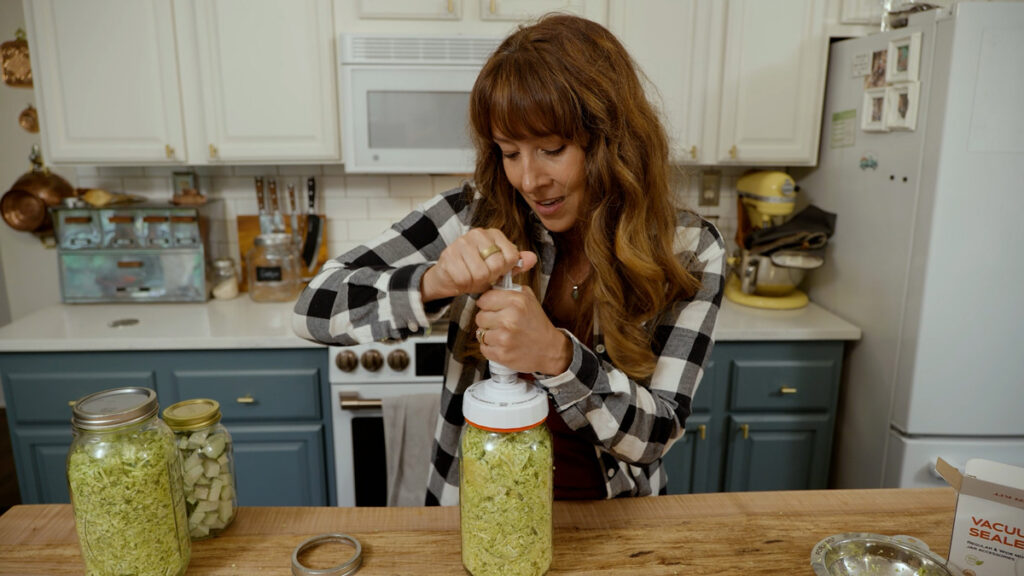
How to Freeze Dry Zucchini
As I mentioned, freeze dried zucchini is a great way to enjoy the fresh flavor of this vegetable all year. It keeps the vitamins and minerals intact, instead of cooking many of them out like with canning. This method lets you enjoy zucchini’s great taste and health benefits all year.
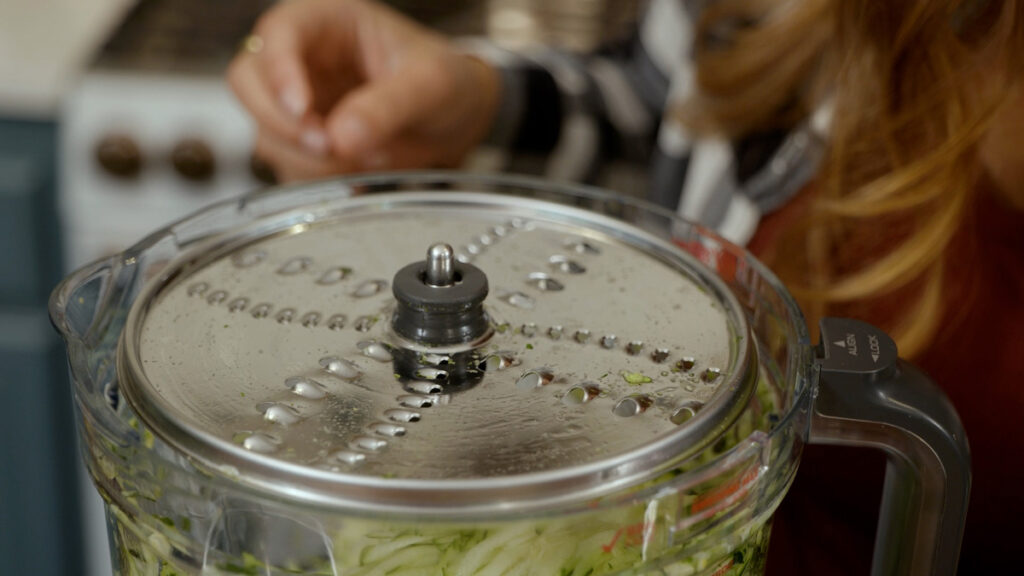
Supplies Needed
To freeze dry zucchini well, you need a few important supplies. With the right tools, the process is quick and easy, and you all know how much I love being a modern pioneer! When tools help make the job faster and more simple, I’m on board!
- Freeze Dryer – You cannot freeze dry zucchini without a freeze dryer. I have the Harvest Right small four-tray machine.
- Food Processor – I love my new Breville food processor. It’s been such a workhorse in my kitchen, and it’s definitely the Cadillac of all food processors I’ve ever had. This makes shredding or dicing your zucchini a breeze and cuts the hands-on time down significantly. If you don’t have a food processor, you can use a box grator.
- Knife & Cutting Board – You want to remove the ends from the zucchini and chop it up into pieces that will fit into your food processor. A sharp knife and cutting board will save those counter tops!
- Mason Jars – Once your zucchini is freeze dried, you’ll want to have a plan for how you’re going to store it. I prefer half-gallon sized Mason jars, but you can also use Mylar bags.
- Vacuum Sealer – I love my vacuum jar sealer from ForJars. It works so well for all my freeze dried foods, but I also use it when packaging up bulk goods like beans and even flour.
- Oxygen Absorbers – If you’re going to be storing your food for longer than a couple of weeks, I highly recommend adding an oxygen absorber to your jar or bag. Vacuum sealing is great, but you also want to eliminate any additional oxygen left remaining for the longest shelf-life.
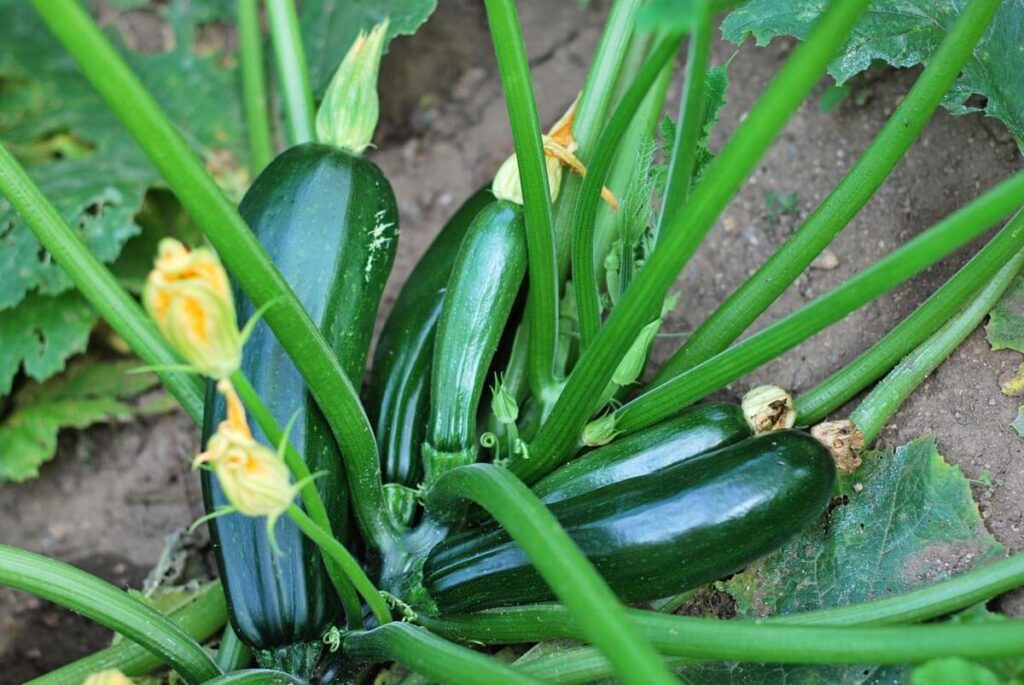
Ingredients Needed
The beauty of freeze drying zucchini is that there’s only one ingredient, zucchini! I like to save those perfectly small to medium zucchini for grilling, and I utilize the freeze dryer for those monsters that get a little out of control.
- Zucchini – Any size zucchini will work. Always choose zucchini that are firm and fresh. Cut out any marks or soft spots. For larger zucchini, be sure to remove the seeds prior to freeze drying.

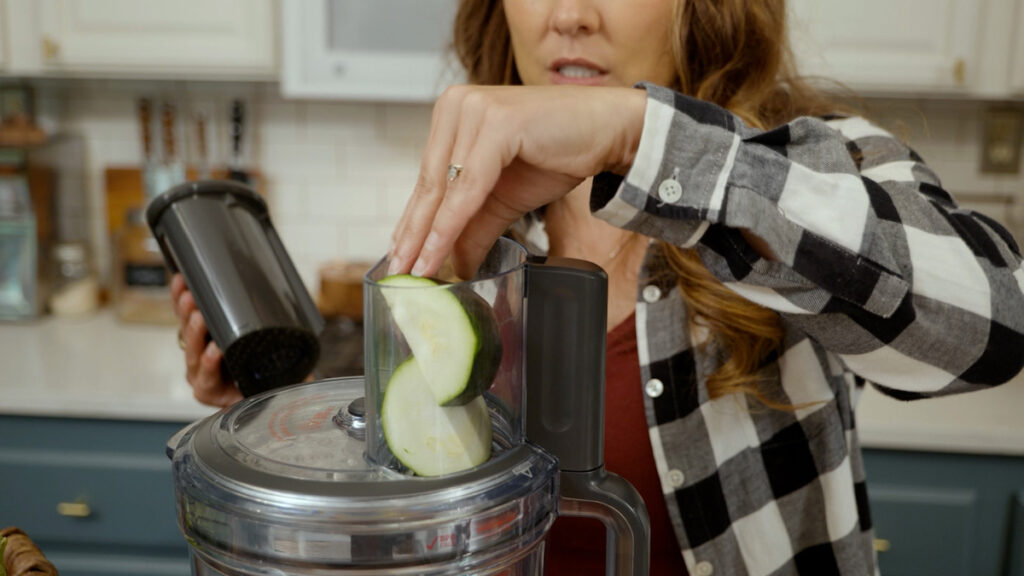
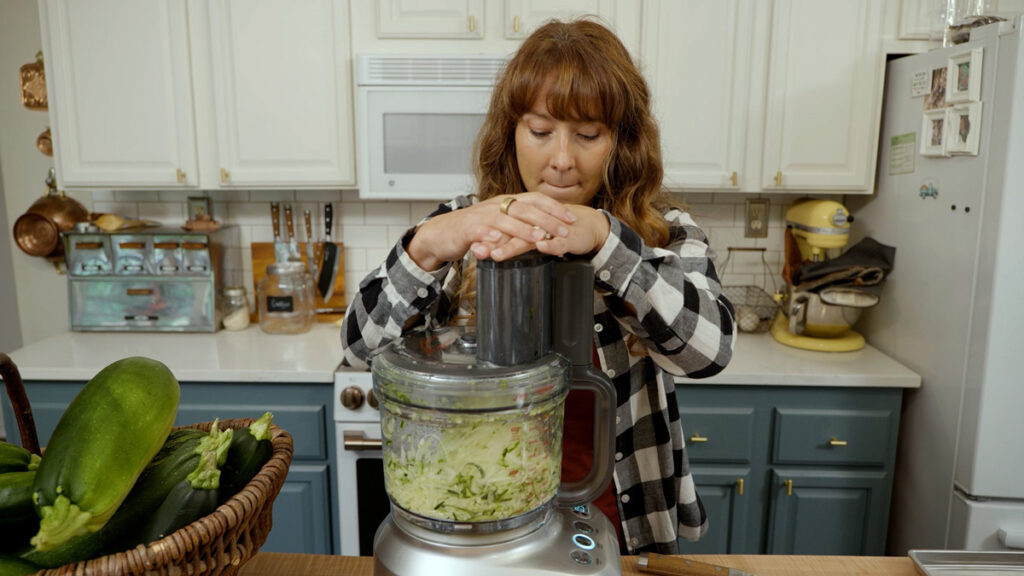
Step-by-Step Directions
Freeze drying zucchini is super simple, but there are a few important steps to ensure your zucchini is preserved properly and shelf-stable.
- Harvest and wash zucchini to get rid of any dirt. Then, dry with a clean towel.
- Using a knife, slice off the blossom and stem end of the zucchini and feed to the chickens or add to the compost.
- Cut zucchini into small enough pieces to fit into your food processor (if using).
- Grate/shred zucchini.
- Spread evenly onto freeze dryer trays. Don’t allow the zucchini to pile up beyond the sides of the trays.
- Place trays in freeze dryer and follow the manufacturer’s instructions. Pro Tip: To save valuable time, you can pre-freeze your trays of zucchini prior to freeze drying.
- Once the freeze drying cycle is complete, remove the trays and crumble the zucchini, feeling for any areas that are cold to the touch. This will tell you there’s still moisture in the zucchini and you’ll need to add it back to the freeze dryer and continue freeze drying.
- Carefully transfer freeze dried zucchini to storage jars (or Mylar bags), add an oxygen absorber to each jar and place a two-piece Mason jar lid on top.
- Use a vacuum sealer to seal the jars, then label and date the jars. Pro Tip: I like to leave the bands on the jars in case the seal breaks in storage. This will help prevent excess oxygen from getting into the jar and spoiling my efforts.

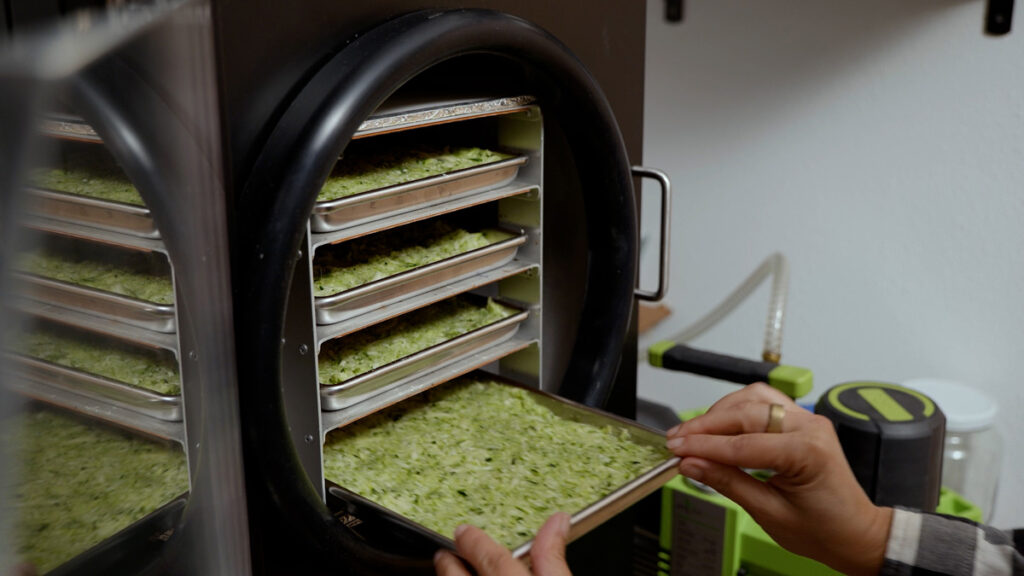
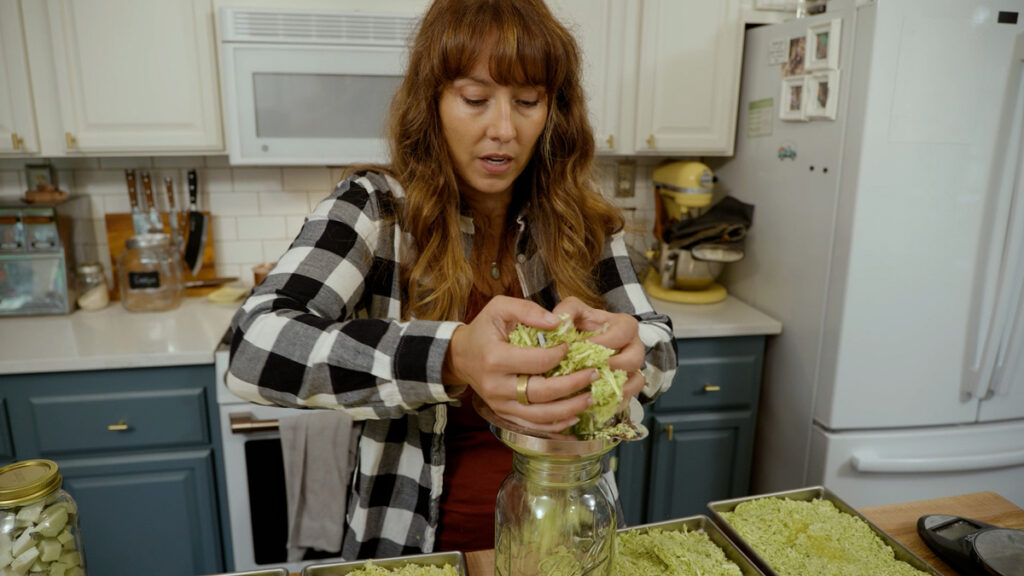
Storing Your Freeze Dried Zucchini
Storing freeze dried zucchini right keeps it fresh and full of nutrients. I’ve found that using the best storage methods makes it last longer. These tips will help keep your freeze dried zucchini fresh for later.
Best Storage Practices
For storing freeze dried zucchini, I suggest vacuum-sealed bags or airtight glass jars. These keep air and moisture out, which helps keep the zucchini fresh. Here are more tips to remember:
- Store in a cool, dark place away from direct sunlight.
- Label and date each container to keep track of when you stored them.
- Avoid opening the storage containers frequently to maintain freshness. (And re-seal the jars after dipping into them each time.)
All of these tips should increase your shelf-life considerably. The shelf life of freeze dried zucchini can vary, from 2 to 25 years, depending on how you store it. Here are some factors that affect shelf life:
| Storage Method | Shelf Life |
|---|---|
| Vacuum-Sealed Bags | 5 to 10 years |
| Airtight Glass Jars | 10 to 25 years |
| Plastic Bins (with oxygen absorbers) | 5 to 10 years |
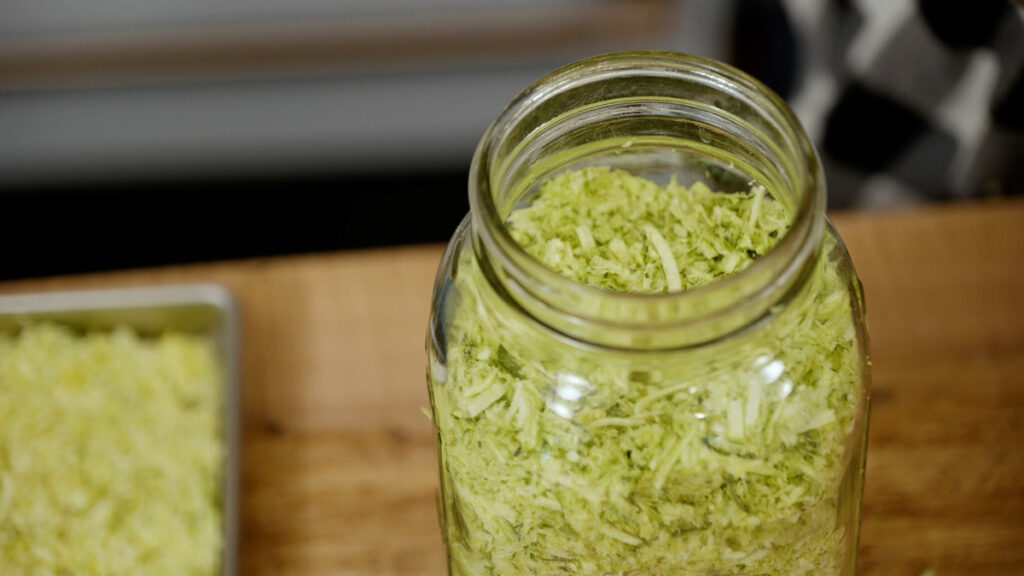
How to Rehydrate Freeze Dried Zucchini
When you’re ready to use your freeze dried zucchini, you may choose to reconstitute (or rehydrate) it first. There is an exact way and an easier way to do this.
The exact method to know how much liquid needs to be added back in is to weigh your tray of zucchini prior to freeze drying, then weigh your tray of freeze dried zucchini once it’s completely dry. The difference is the amount of liquid (by weight) that needs to be added back in for that tray.
So, for example, if your tray weighs six pounds prior to freeze drying and five pounds after freeze drying, you would need to add 16 ounces (one pound) of water to reconstitute the entire tray. If one tray equates to about four cups of freeze dried zucchini, then you know you’ll need about 1/4 cup of water per cup of zucchini.
The easier way to do this is to simply measure out how much zucchini is needed and place it in a bowl. Add just enough water to the bowl so all the zucchini gets a good amount. Give it a stir, wait a few minutes and then add more water, if needed, or pour off any excess liquid.
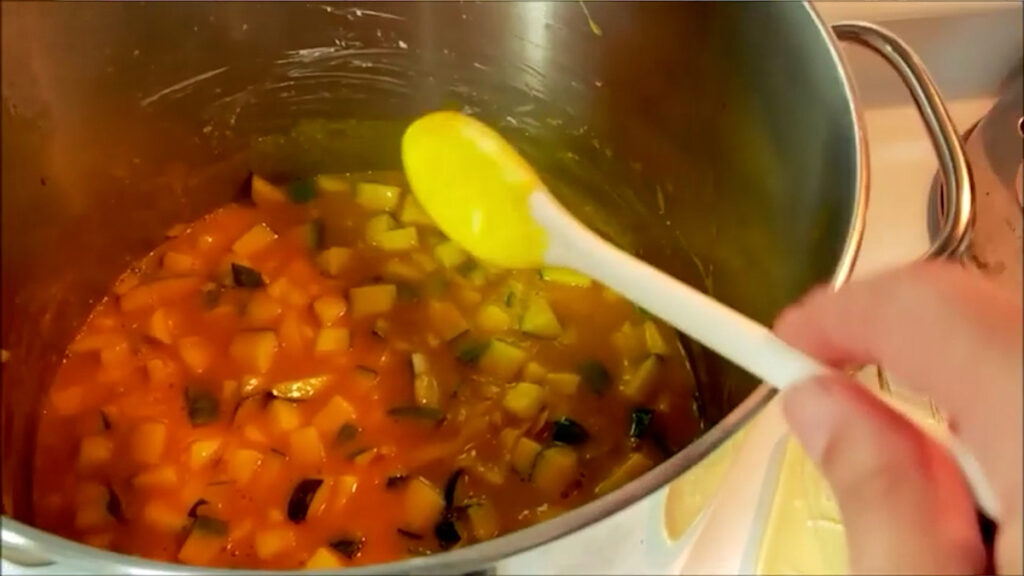
Ways to Use Freeze Dried Zucchini
Freeze dried zucchini opens up so many options year-round for me. I often find myself trying to sneak it in as many places as possible to boost nutrition and flavor.
- Soups & Stews – Adding freeze dried zucchini to soups and stews adds great volume to the meal and can help thicken the soup or stew when added before it’s reconstituted. The zucchini gets nice and soft right in the soup or stew and blends well with the flavors.
- Baked Goods – I love incorporating either shredded zucchini or zucchini flour into my baked goods. It goes into banana bread, muffins, and pancakes, making them moist and tasty (with a boost in nutrition). Pro Tip: When making something like my double chocolate zucchini muffins or my blueberry zucchini muffins, you’ll want to reconstitute the shredded zucchini first. If using zucchini flour, simply pulse the freeze dried shredded zucchini in a food processor until it resembles flour and use 1:1 to replace coconut flour. Or, it can replace up to 1/3 of the regular all-purpose or whole wheat flour called for in a recipe. For example, if a recipe calls for 1 cup of all-purpose flour, use 1/3 cup of zucchini flour and 2/3 cup of all-purpose flour.
- Healthy Snack – You saw my mention about zucchini chips dipped in ranch dressing, right? YUM! I find seasoning the zucchini chips with some ranch seasoning herbs (like dill, garlic powder and some sea salt) adds the perfect flavor.
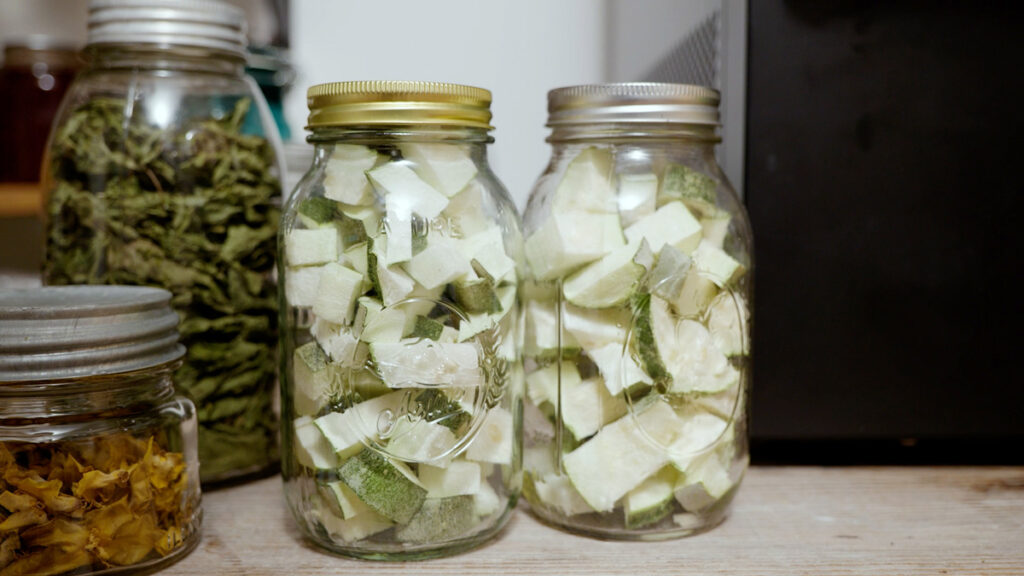
Freeze Dried Zucchini vs. Other Drying Methods
Many people talk about the differences between freeze drying vs. dehydrating food. They are usually wondering which method keeps the flavor and nutrients best and takes the least amount of effort and time. I think freeze dried zucchini wins because it keeps its taste and texture, the nutrition is better than dehydrated zucchini, which can lose important vitamins, and as far as hands-on time goes, it’s pretty even.
Let’s look at how the different methods compare:
| Drying Method | Nutrient Preservation | Flavor Retention | Texture |
|---|---|---|---|
| Freeze Drying | High | Excellent | Crispy and Lightweight |
| Dehydration | Moderate | Good | Chewy and Dense |
| Air Drying | Low | Fair | Soft and Brittle |
FAQ
What is freeze dried zucchini?
Freeze dried zucchini is zucchini that has lost its moisture. It keeps its nutrients and taste. This makes it great for keeping food for a long time and for cooking.
How do I freeze dry zucchini at home?
You need a freeze dryer to freeze dry zucchini at home. Cut the zucchini into even slices or shred. Then, put them in the machine and follow the instructions for settings and time.
What are the health benefits of freeze dried zucchini?
Freeze dried zucchini keeps important vitamins like Vitamin A, Vitamin C, and potassium.
How should I store freeze dried zucchini?
Keep freeze dried zucchini in vacuum-sealed bags or glass jars in a cool, dry spot. When stored correctly, it can stay fresh for 2 to 25 years.
Can I use freeze dried zucchini in baking?
Yes! You can add reconstituted freeze dried zucchini to baked goods like breads and muffins. It adds moisture and great texture.
What are some creative ways to use freeze dried zucchini?
Use freeze dried zucchini in soups, stews, baking or as veggie chips. Just soak it in water before using, and you’re ready to go!
Is freeze drying better than other drying methods?
Yes! Freeze drying keeps more flavor and nutrients than air drying or dehydrating. It’s the best way to preserve many vegetables.
What types of zucchini are best for freeze drying?
Choose fresh, firm zucchini without any marks. Starting with high-quality produce will yield high-quality results.
What common mistakes should I avoid when freeze drying zucchini?
Don’t blanch the zucchini before drying it, and don’t put too much on each tray at a time. Cutting the zucchini correctly and following the manufacturer’s directions for your freeze dryer is key.
How long does the freeze drying process take?
Freeze drying zucchini takes about 20 to 30 hours, depending on how you prepared the zucchini. It will be more or less depending on how thick the slices are and the machine’s settings.
Did you try this freeze drying tutorial? If so, please leave a star rating in the recipe card below. Then, snap a photo of your freeze dried zucchini and tag me on social media @melissaknorris so I can see!
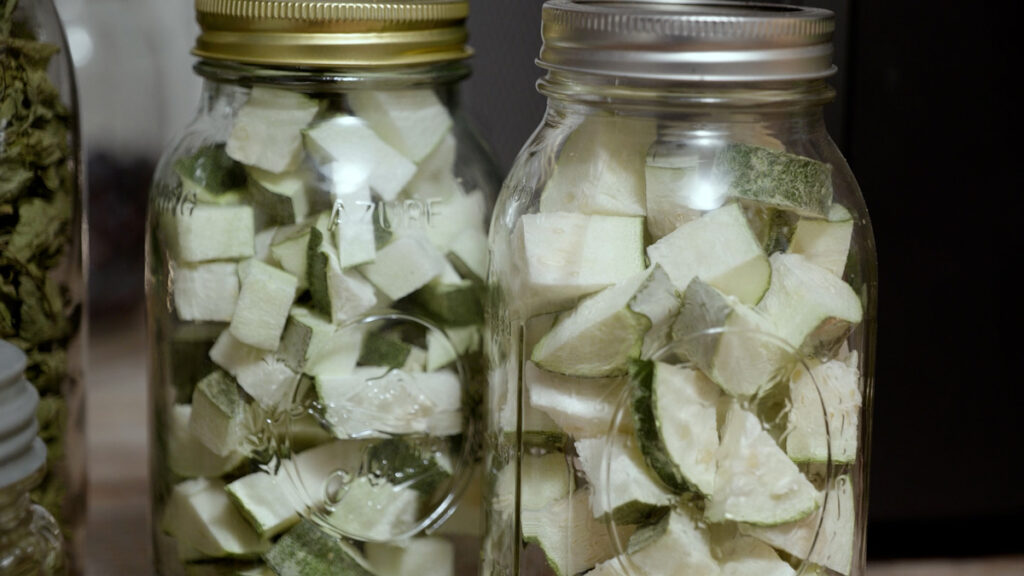
More Posts You May Enjoy
- Must-Know Freeze Drying Tips (With Carolyn Thomas)
- Freeze Dried Eggs for Long-Term Storage (+ Reconstituting Freeze Dried Eggs)
- How to Preserve Meat, Eggs & Dairy
- Freeze Dried Hot Cocoa Mix
- 10 Food Preservation Methods Everyone Should Know
- Easy & Fast Preservation Methods
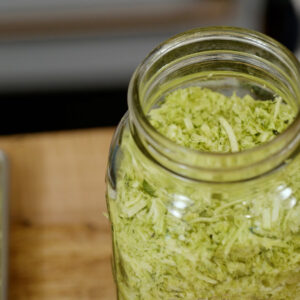
How to Freeze Dry Zucchini
Equipment
- Freeze Dryer
- Food processor
- Knife & Cutting Board
- Mason Jars & Lids or Mylar Bags
- Vacuum Sealer
- Oxygen Absorbers
Ingredients
- 7 medium zucchini grated
Instructions
- Harvest and wash zucchini to get rid of any dirt. Then, dry with a clean towel.
- Using a knife, slice off the blossom and stem end of the zucchini and feed to the chickens or add to the compost.
- Cut zucchini into small enough pieces to fit into your food processor (if using).
- Grate/shred zucchini.
- Spread evenly onto freeze dryer trays. Don’t allow the zucchini to pile up beyond the sides of the trays.
- Place trays in freeze dryer and follow the manufacturer’s instructions. Pro Tip: To save valuable time, you can pre-freeze your trays of zucchini prior to freeze drying.
- Once the freeze drying cycle is complete, remove the trays and crumble the zucchini, feeling for any areas that are cold to the touch. This will tell you there’s still moisture in the zucchini and you’ll need to add it back to the freeze dryer and continue freeze drying.
- Carefully transfer freeze dried zucchini to storage jars (or Mylar bags), add an oxygen absorber to each jar and place a two-piece Mason jar lid on top.
- Use a vacuum sealer to seal the jars, then label and date the jars. Pro Tip: I like to leave the bands on the jars in case the seal breaks in storage. This will help prevent excess oxygen from getting into the jar and spoiling my efforts.
Notes
- Read through the blog post above for all my best tips and tricks!
- You’ll see my estimated cost is zero… this is because I grow my own zucchini and am using supplies I already had on hand for my freeze dryer. There will be the electricity cost, and the cost of oxygen absorbers. However, I don’t consider these a cost to the recipe itself, therefore, I put $0.
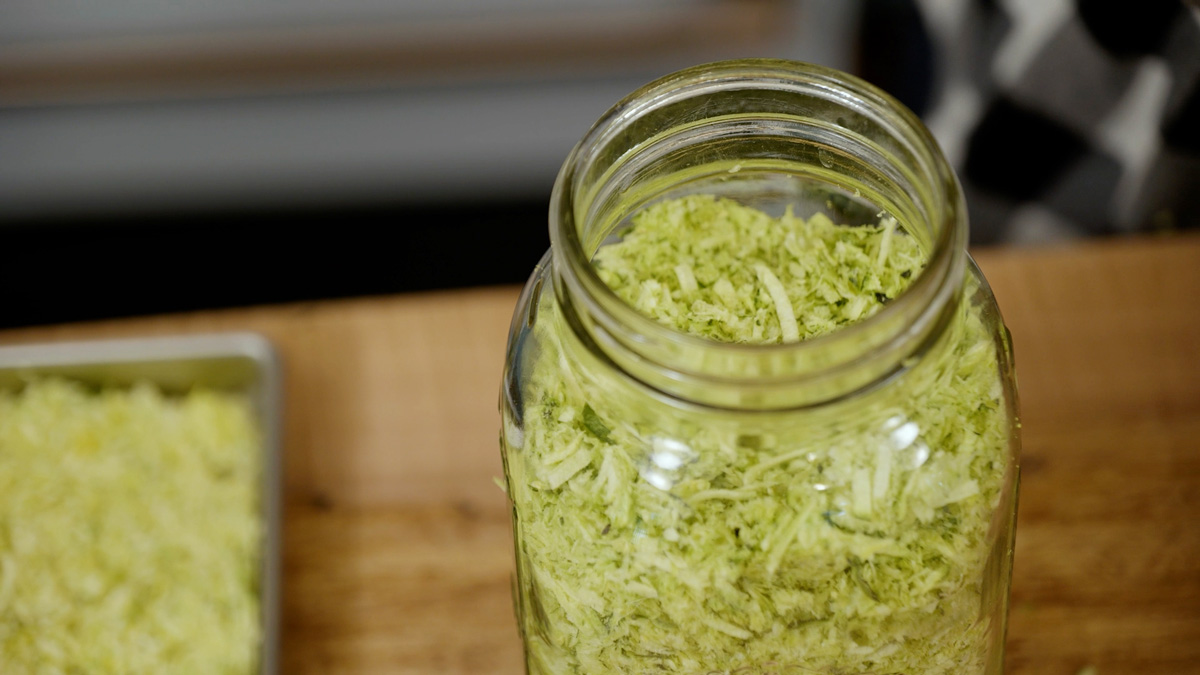



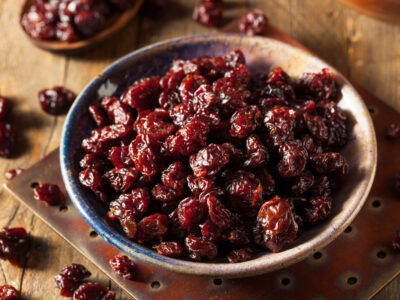






I opened my shredded freeze dried zucchini and found it soft and stuck together (all the jars are like that). It doesn’t smell weird. I added O2 absorbers and used an O2 vacuum on a mason jar. The lid was sealed. I had it stored in a dark room in the basement. When I initially freeze dried it, it was light and crispy and did not feel cold. Did I do something wrong or not run the vacuum long enough?
Sounds like it wasn’t ran long enough.
I’m a new by to the freeze drying scene and have a lot to learn. Very precise directions which I love. Can someone tell me that if the zucchini is already frozen on the trays, how long do I set the freeze time before the drying kicks in?
The machine determines that, you don’t set the freeze time.
Very clear and concise. Wish all freeze drying posts were of this quality. Prepping a batch today. Just finished two bushels of tomatoes and a batch of cucumbers.
Excellent tutorial and a fantastic way to preserve all that extra zucchini! I love that my shredded zucchini no longer needs to be frozen, taking up valuable freezer space.